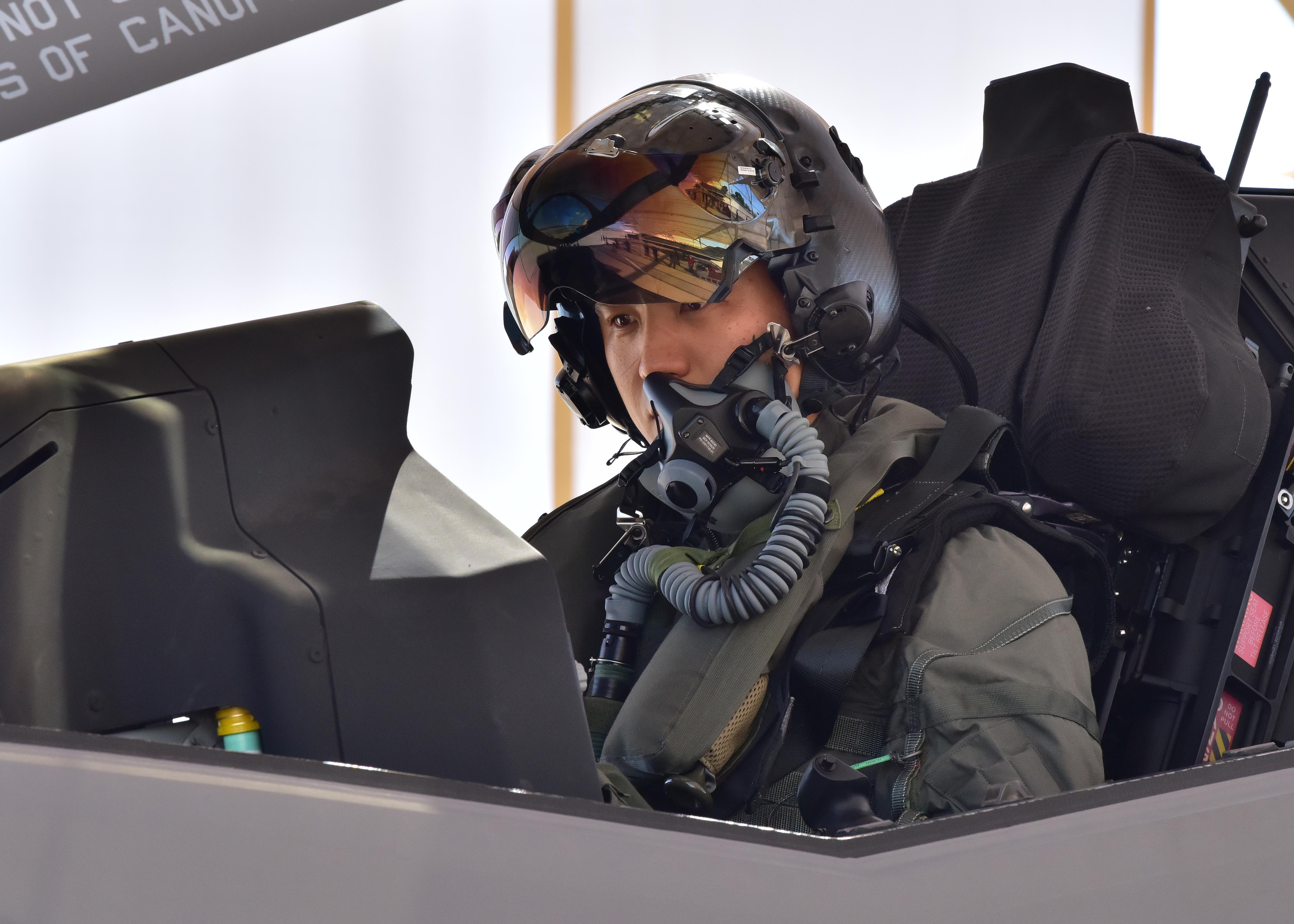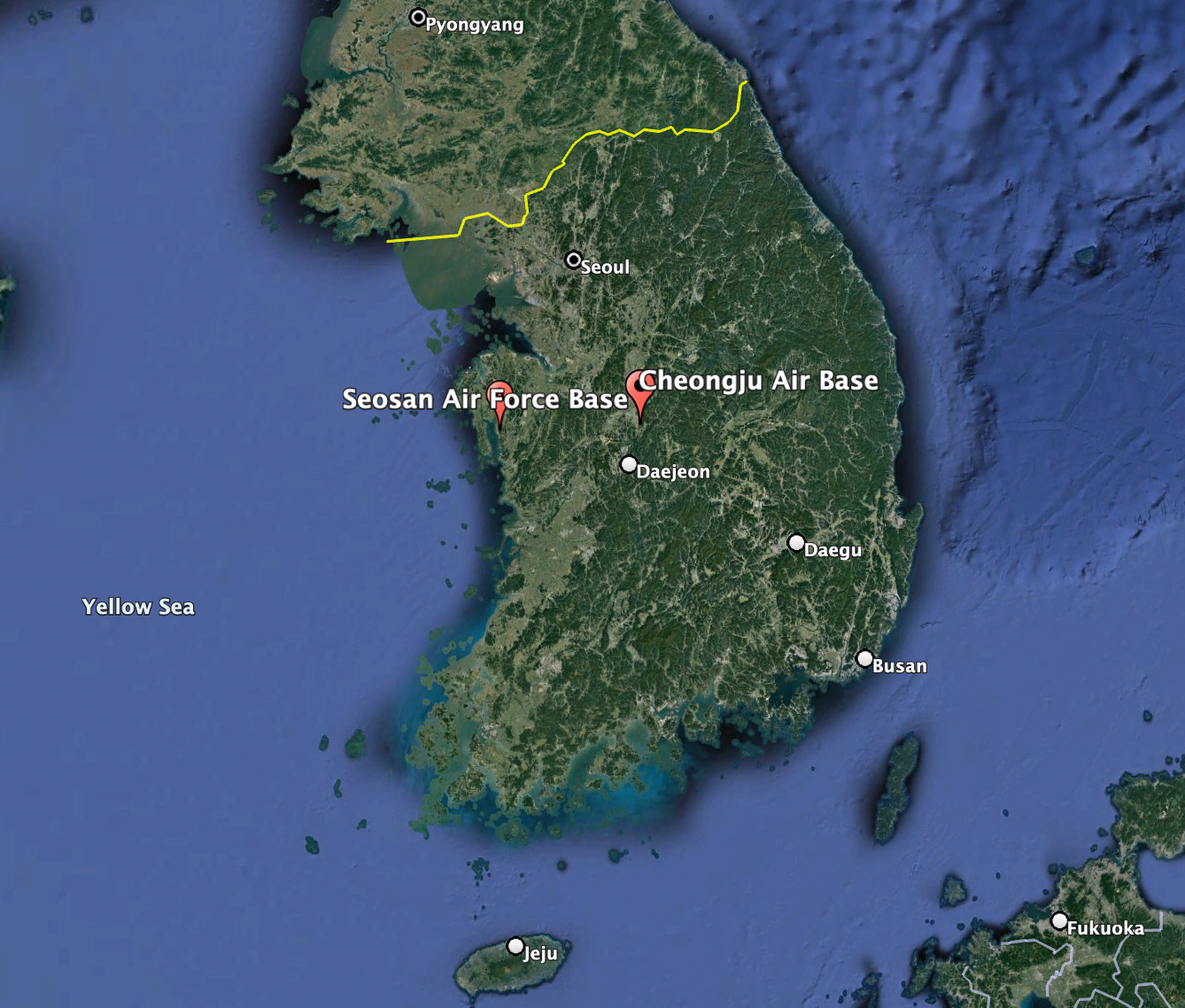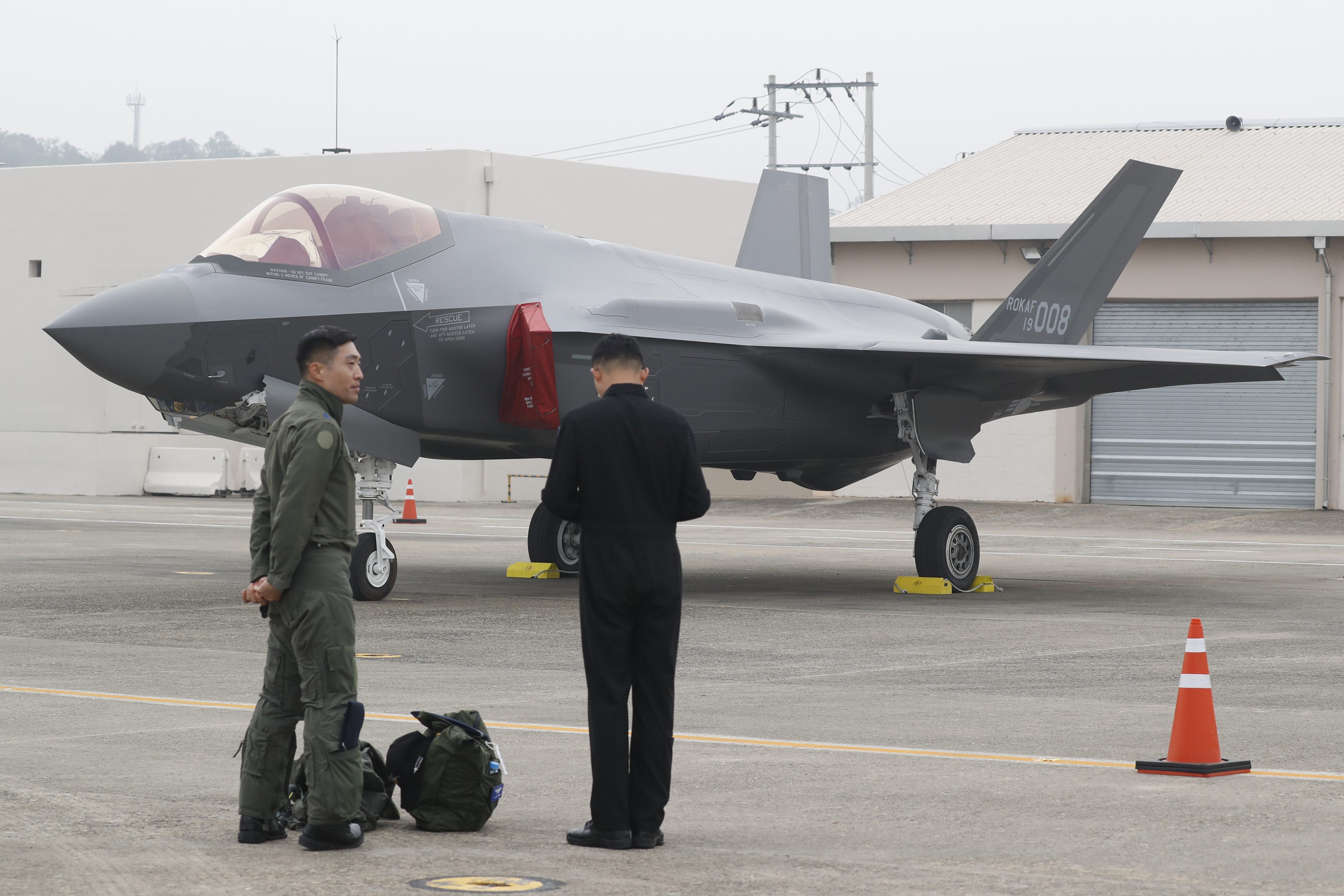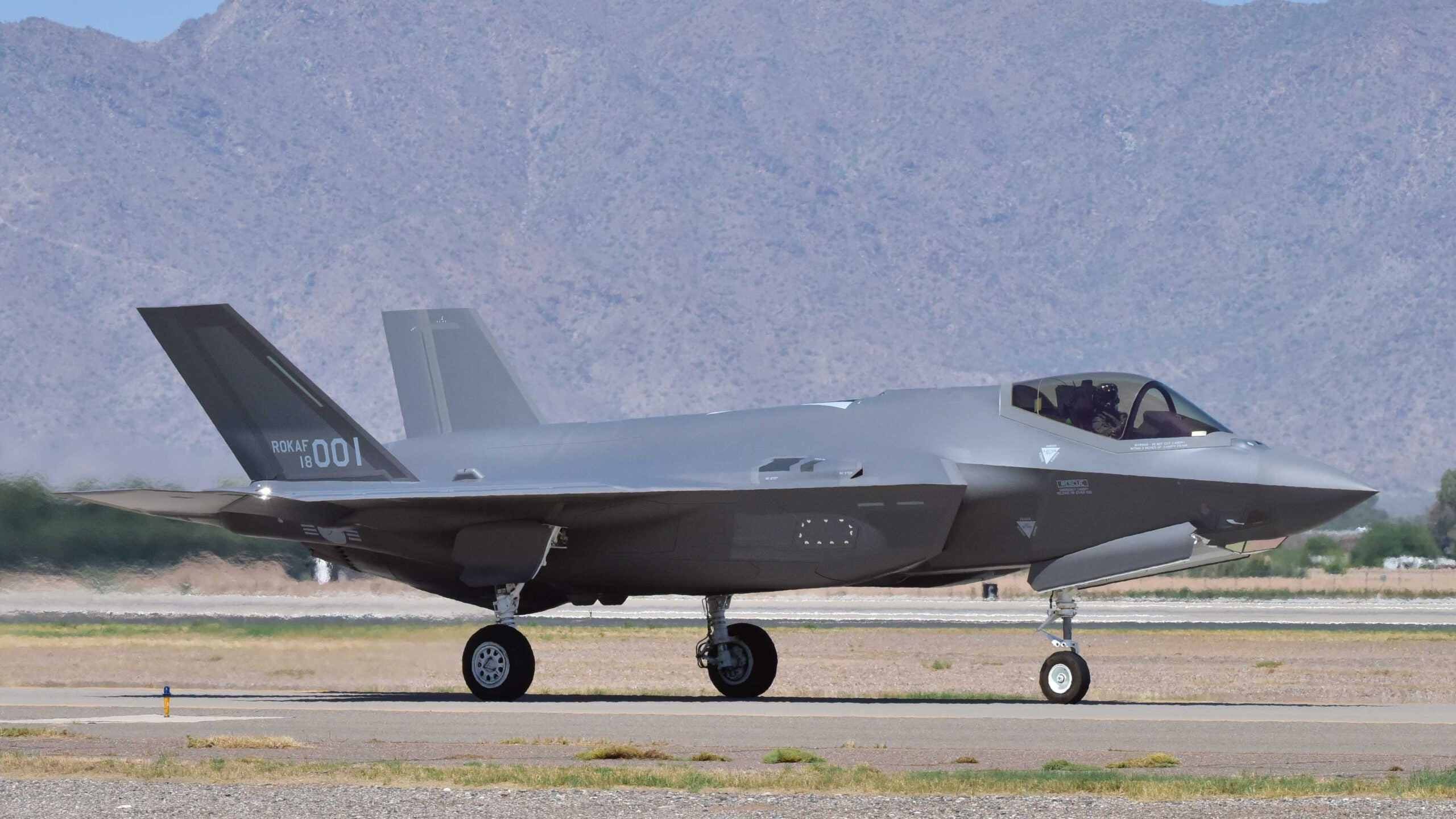South Korea has grounded its fleet of F-35A stealth fighters, pending a full investigation into an accident yesterday, in which one of the jets was forced to make a belly landing during a training mission. The pilot was uninjured, but initial accounts suggest that the emergency was caused by a “major systems malfunction” that prevented the landing gear from being deployed.
Defense ministry sources in Seoul confirmed the grounding order today, an unnamed defense official stating that “with the investigation underway, the entire [F-35] fleet is suspended from flying.” Earlier reports had spoken of “avionics system issues,” although the latest wording sounds, at least superficially, to suggest a more comprehensive problem onboard the jet. The jet is one of at least 30 examples of the type to have been delivered to Korea to date.

Shin Ok-chul, the vice chief of staff of the Republic of Korea Air Force (ROKAF), meanwhile told a parliamentary hearing that the F-35 had been flying at low altitude when the pilot heard a series of bangs, prompting him to check the aircraft’s systems.
“All systems had stopped working except flight controls and the engine,” Shin said, at which point the pilot made the decision to remain with the aircraft and attempt a belly landing at Seosan Air Base in the western province of South Chungcheong, at 12:51 PM local time on Jan. 4.
Alerted to the emergency, firefighters at the base doused the runway with foam, to reduce the risk of fire when the jet touched down. So far, however, there is no indication of the extent of the damage sustained, and no photos of the incident have become available. It’s not clear currently if the jet was operating from Seosan Air Base at the time of the incident, or whether it recovered there while flying from its home station of Cheongju, in the central province of North Chungcheong.

As far as is known, this is the first time a belly landing has been attempted in a Joint Strike Fighter. Emergency recovery is a challenge for any aircraft, but is not entirely uncommon, especially for high-performance fighters.
However, in the case of the F-35, or other stealth designs, a belly landing can be particularly problematic given the sensitive nature of their coatings and the tight tolerances of their construction. On the other hand, even the results of a stealth fighter skidding along a runway can be made good, as evidenced by the recent completion of the effort to return a seriously damaged U.S. Air Force F-22 Raptor to service. However, the process can be long — nearly four years in the F-22 example — and costly.
The grounding order is not surprising given the apparent nature of the problems that the pilot faced before the belly landing, and it’s clear that the ROKAF will want to know exactly what was responsible for what sounds like a significant systems anomaly.
The ROKAF has invested heavily in modernizing its fleet with the stealth jet. Despite the cost, the ROKAF determined that a fifth-generation type was required to counter China’s stealth developments and have the capability to penetrate North Korean airspace at a time of escalating military tensions with its neighbor.
Selected under the third phase of its long-running fighter procurement program, or F-X, Seoul is investing around $7 billion to acquire 40 examples of the conventional takeoff and landing (CTOL) F-35A variant. A Letter of Offer and Acceptance between the South Korean and U.S. governments was signed in September 2014, with plans for another 20 of the jets to be purchased at a later date.
The first F-35A for the ROKAF was rolled out at Lockheed Martin’s facility in Fort Worth, Texas, in March 2018, and the first pair of jets arrived at Cheongju Air Base in March 2019. Initial operating capability was declared before the end of the same year.

At the same time, the fact that Seoul operates multiple types of fighters means that other fleets are still available to meet routine ROKAF requirements and respond to contingencies. These jets include 60 multirole F-15K Slam Eagles, advanced versions of the F-15E Strike Eagle, and the survivors of 180 F-16C/Ds originally delivered. Seoul is now in the process of upgrading 134 of its Vipers to the F-16V standard, with new avionics including an AESA radar. As well as these more modern jets, the ROKAF still flies smaller numbers of aging F-4E Phantom II and F-5E/F Tiger II fighters, plus tactically roled FA-50 jets derived from the T-50 trainer.
Prior to the South Korean incident, the most recent accident involving a Joint Strike Fighter saw a British Royal Air Force F-35B plunging into the Mediterranean during takeoff from the aircraft carrier HMS Queen Elizabeth. The pilot ejected safely, and you can read more about that incident here.
Landing incidents involving F-35s are by no means unheard of. The Japan Air Self-Defense Force has reportedly made at least seven emergency landings in F-35As, in addition to a fatal accident in April 2019. In a May 2020 incident at Eglin Air Force Base, an F-35A crashed while landing due to a combination of factors. Other U.S. Air Force F-35As have suffered nose-gear collapses on landing, at Eglin Air Force Base in August 2018 and at Hill Air Force Base in Utah in June 2020.

The outcome of the investigation into yesterday’s belly-landing incident will be keenly awaited not just by the ROKAF but the wider F-35 operating community, as the delivery total hits the 750-aircraft mark. For South Korea, there remains the option of acquiring another 20 CTOL F-35As, valued at around $3.3 billion, while future plans also envisage orders for short takeoff and vertical landing (STOVL) F-35B variants of the Lightning II, to equip its forthcoming aircraft carriers. With this in mind, officials will be especially eager to determine whether the incident was a one-off or a symptom of a more systemic issue.
We will provide updates on this story as soon as further information about the incident becomes available.
Contact the author: thomas@thedrive.com
